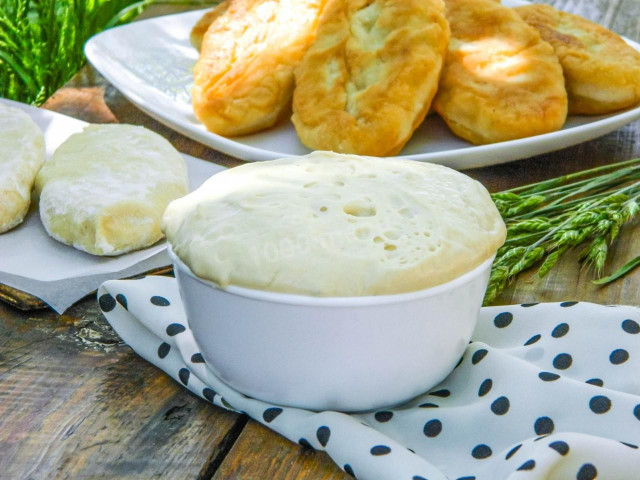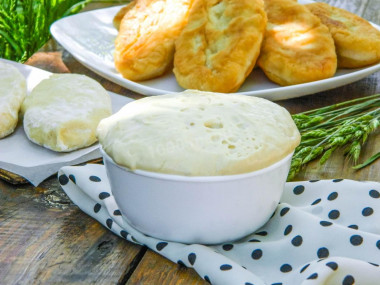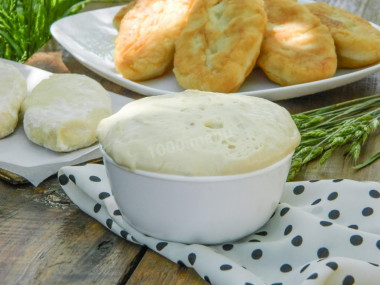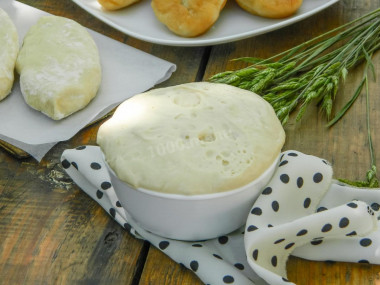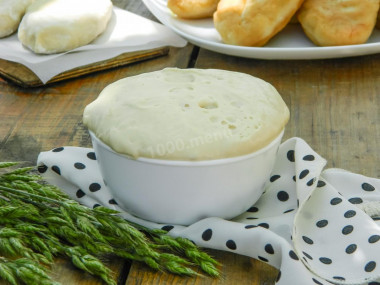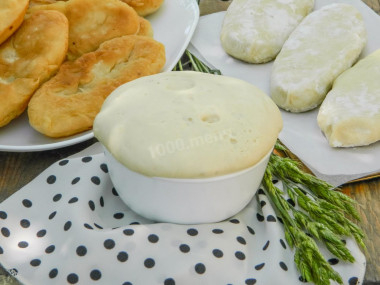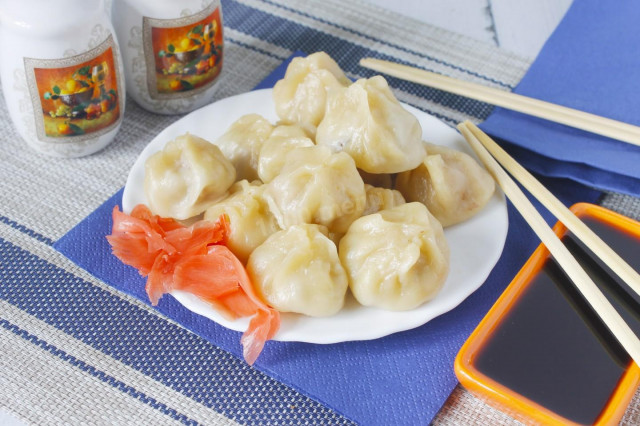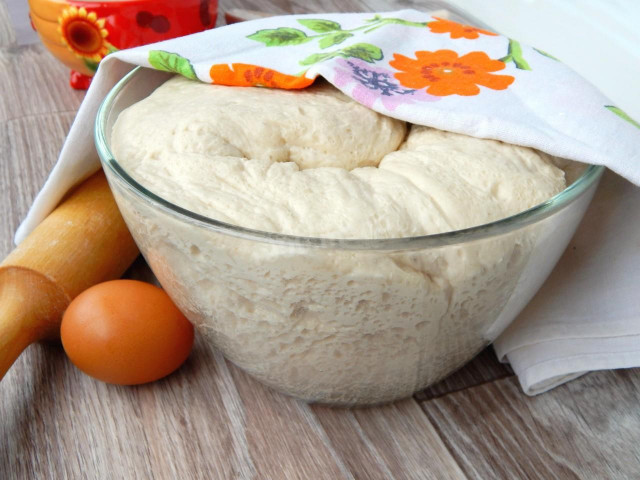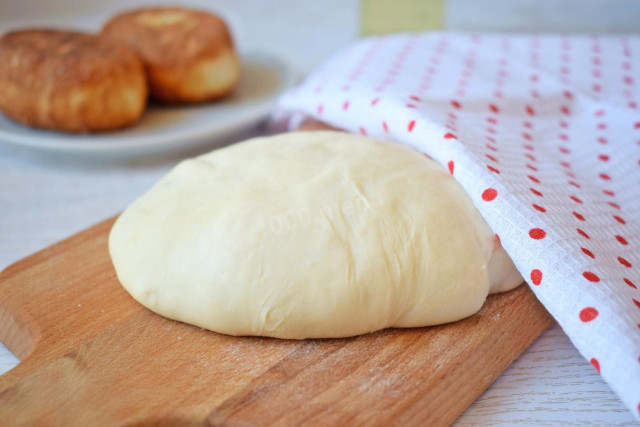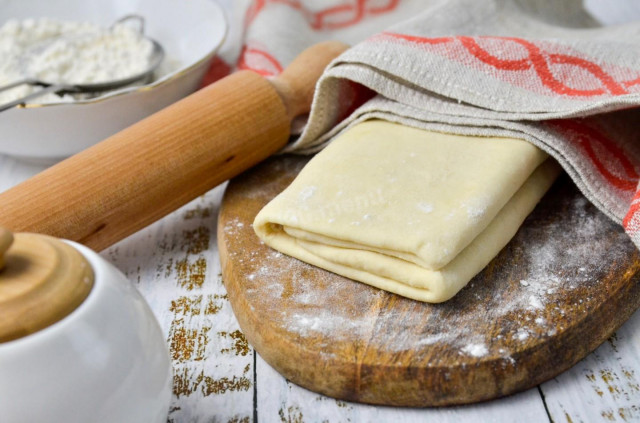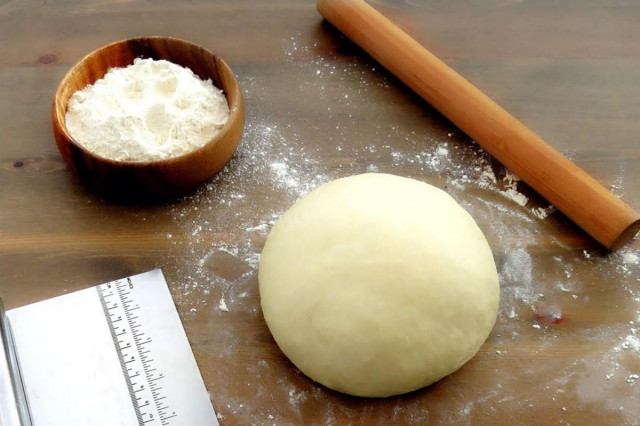Composition / ingredients
Step-by-step cooking
Step 1:
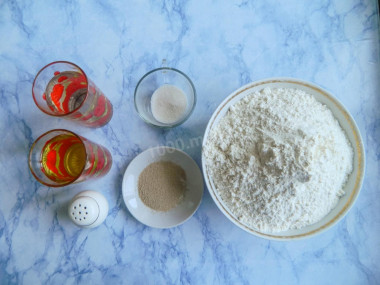
Prepare all the necessary ingredients for making the dough. Take the flour of the highest grade. Any odorless vegetable oil will do. Before using yeast, read the instructions for them. Some yeast must be activated by first dissolving in warm water, and some can be immediately added to flour. To prepare the dough for pies, those that need to be activated beforehand will be suitable.
Step 2:
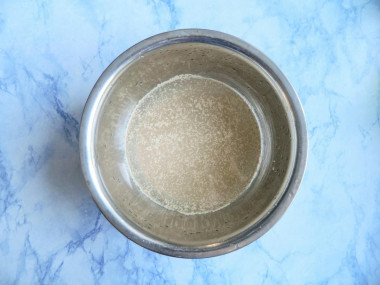
To knead the dough, take a deep bowl in which it will be convenient to mix dry and liquid ingredients. Heat the water to a temperature of 37-40 degrees. In the absence of a special cooking thermometer, the required temperature can be determined in the following way: you need to drop a drop of water on the inside of the wrist. If the feeling is neutral - not cold and not hot, then the temperature is correct. Add sugar and yeast to the water.
Step 3:
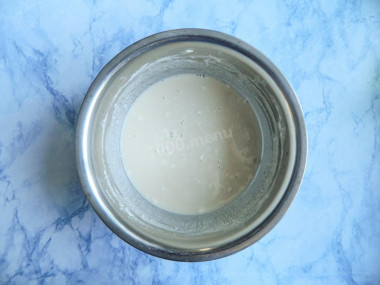
Stir with a spoon until the sugar is completely dissolved. If the temperature is too low, the yeast will work slower and it will take longer to cook. At elevated temperatures, the yeast will die, the dough will not rise and the taste of the finished pies will be spoiled.
Step 4:
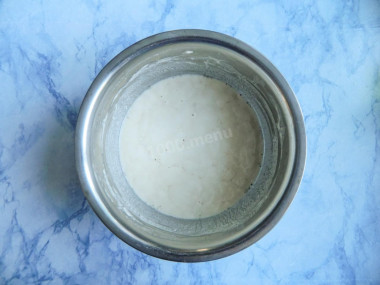
Add 4 tablespoons of sifted flour, mix and leave for 10-15 minutes in a warm place. The flour for the dough must be sifted in order to sift out small debris and saturate the dough with oxygen and it rose well and was airy. If a fluffy cap appears on the surface, then the yeast has become active and you can continue cooking.
Step 5:
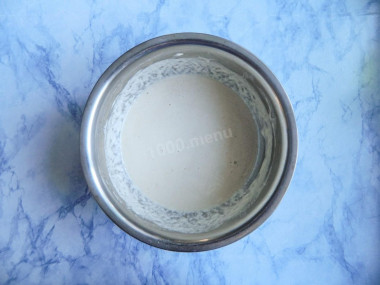
Add salt and 2 tablespoons of vegetable oil to the dough. Leave one more spoon to lubricate the bowl (step 9). Mix everything well so that the salt dissolves and the oil spreads evenly through the liquid.
Step 6:
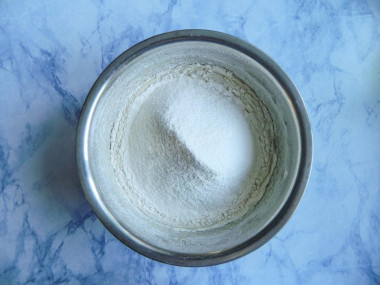
Sift half of the required amount of flour into a bowl to sift out small debris and the dough is saturated with oxygen. Stir with a spoon until smooth. Sift the remaining flour into a separate container.
Step 7:
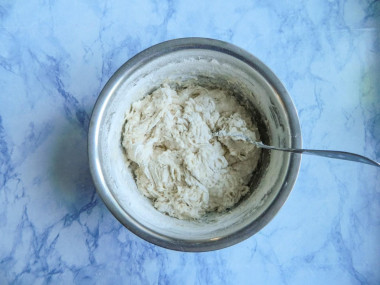
Since the properties of flour of the same grade, but different manufacturers may differ, in order to get the desired consistency, add flour in small portions. When it becomes difficult to knead with a spoon, start doing it with your hands. Knead the dough thoroughly.
Step 8:
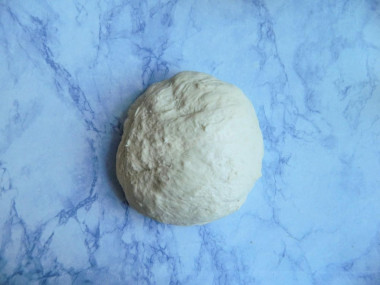
Don't "hammer " the dough with flour - it should turn out soft and tender. If flour remains, it will be useful to you when you make pies.
Step 9:
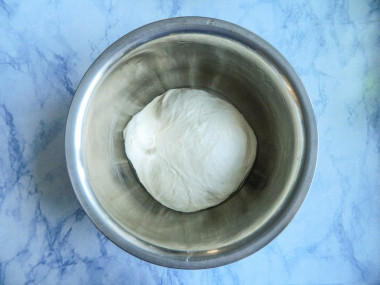
Lubricate the bottom and sides of the bowl with vegetable oil so that the dough does not stick to the dishes. Also knead the finished dough with your hands with butter. Cover the bowl with a napkin or towel so that it does not dry and rises well. Leave in a warm place for about 1-1.5 hours.
Step 10:
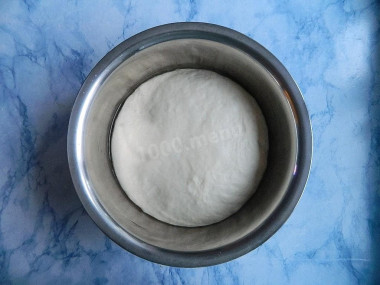
When the dough has increased 1.5-3 times in volume, it is ready and you can start working with it. Make pies by greasing your hands with butter or sprinkling with flour. But keep in mind that if there is a lot of flour on the pie, it will burn during the frying process.
From the amount of products given in the recipe, a dough for more than 20 pies is obtained. The exact number depends on their size.
Pies from such dough can be eaten both warm and cooled. And even after a day they remain tasty and usable.
This dough is also suitable for making pies and pies in the oven.
Be prepared for the fact that flour may need more or less than indicated in the recipe. Focus not on the amount of flour, but on the desired consistency of the dough. Read a lot of useful information about flour and its properties in this article!
The caloric content of the products possible in the composition of the dish
- Granulated sugar - 398 kcal/100g
- Sugar - 398 kcal/100g
- Vegetable oil - 873 kcal/100g
- Salt - 0 kcal/100g
- Water - 0 kcal/100g
- Wheat flour - 325 kcal/100g
- Dry yeast - 410 kcal/100g

